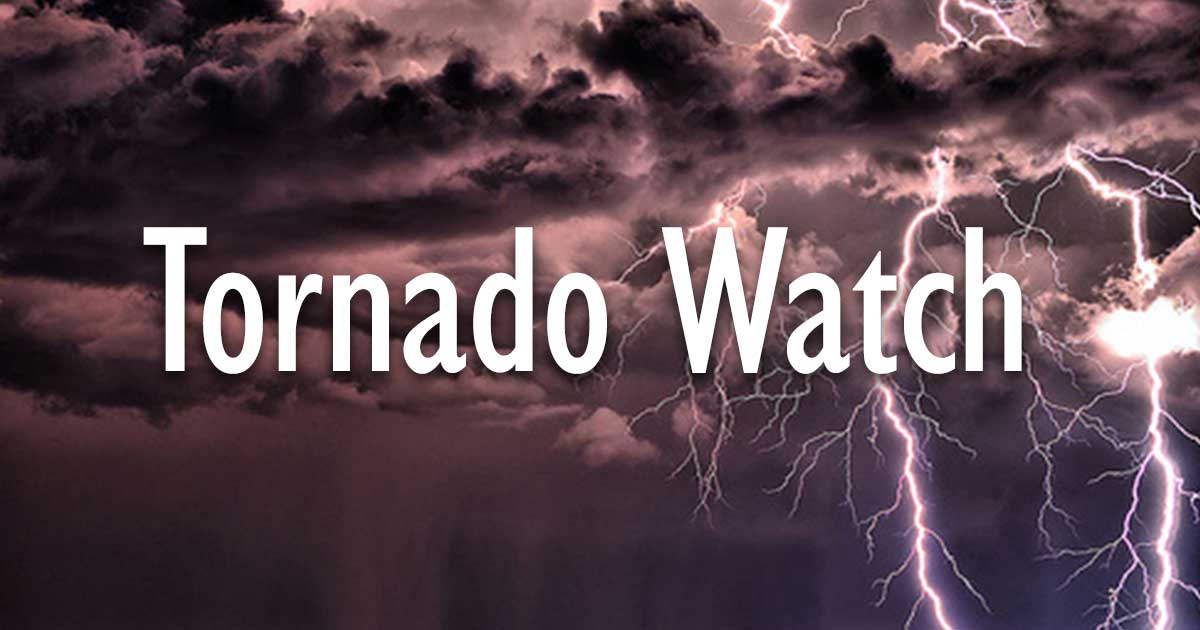Tornado Watch: Understanding and Staying Safe During Severe Weather
What is a Tornado Watch?
**A tornado watch is a weather advisory issued by the National Weather Service (NWS) when conditions are favorable for the development of tornadoes in a particular area. It is not a definite forecast of tornadoes, but rather a warning that severe weather is possible.**
When a tornado watch is issued, it means that atmospheric conditions such as wind shear, instability, and moisture are conducive to the formation of tornadoes. Tornado watches are typically issued for several hours and cover a large geographical area, often encompassing multiple counties or states. It is important to note that a tornado watch does not guarantee the occurrence of a tornado, but serves as a heads-up to be prepared and stay alert.
Understanding the Difference: Tornado Watch vs. Tornado Warning
**It is crucial to understand the distinction between a tornado watch and a tornado warning. A tornado watch means that conditions are favorable for tornado formation, while a tornado warning means that a tornado has been spotted or detected by radar.**
During a tornado watch, remain vigilant and be prepared to take action if a tornado warning is issued. When a tornado warning is issued, it means that a tornado has been sighted or indicated by radar, and immediate action should be taken to protect yourself and seek shelter in a safe location.
What Triggers a Tornado Watch?
Several atmospheric conditions can trigger a tornado watch. Understanding these factors can help in staying informed and prepared for severe weather conditions. Here are some of the key triggers for a tornado watch:
1. Atmospheric Instability: A significant temperature difference between the surface and the upper levels of the atmosphere can create instability. This instability, combined with moisture, can lead to storm development and the possibility of tornadoes.
2. Wind Shear: Wind shear refers to the change in wind speed and direction over a short distance. Strong wind shear can cause rotating updrafts within thunderstorms, which are favorable conditions for tornado formation.
3. Moisture: Sufficient moisture is vital for the development of severe thunderstorms and tornadoes. Moisture from warm, moist air can provide the necessary fuel for storms to grow and intensify.
4. Frontal Systems: The collision of warm and cold air masses along a frontal boundary can trigger the formation of severe thunderstorms and tornadoes. Such atmospheric dynamics often occur during the spring and summer months when warm, moist air from the south interacts with cooler air from the north.
What to Do During a Tornado Watch?
During a tornado watch, it is important to stay informed about the weather conditions and be prepared to take action if necessary. Here are some essential steps to follow:
1. Stay Alert: Keep an eye on local news, weather updates, and listen to emergency alerts or sirens. Tornado watches are usually accompanied by continuous weather coverage to provide real-time information and guidance.
2. Review Your Safety Plan: Ensure that you have a well-practiced tornado safety plan in place for your household or workplace. Discuss the plan with family members, co-workers, or fellow residents to ensure everyone knows what to do in the event of a tornado warning.
3. Monitor Weather Conditions: Stay informed through various sources including weather apps, social media updates from local meteorologists, and the National Weather Service. Pay attention to any changes in the weather and be prepared to take action if a tornado warning is issued.
4. Prepare an Emergency Kit: Assemble an emergency kit that includes essentials such as bottled water, non-perishable food, a first aid kit, flashlights, batteries, a battery-operated weather radio, and any necessary medications. Keep the kit in a designated location that can be easily accessed during an emergency.
5. Identify Safe Shelter Areas: Identify the safest places in your home, workplace, or any other locations you frequent. Basements or storm shelters are ideal for seeking refuge during a tornado. If these options are not available, choose a small, windowless interior room on the lowest level of the building.
6. Stay Informed: Continually monitor the situation until the tornado watch expires or is canceled. Be prepared to take immediate action if a tornado warning is issued in your area.
Frequently Asked Questions
Frequently Asked Questions
Q: How long does a tornado watch typically last?
A: Tornado watches are usually issued for several hours, depending on the expected duration of potential severe weather conditions. The NWS regularly updates and extends or cancels tornado watches as conditions evolve.
Q: Can I still go outside during a tornado watch?
A: While it is not advisable to engage in outdoor activities during a tornado watch, you can still go about your daily routine while remaining vigilant and prepared to take shelter if necessary. It is essential to stay informed and be ready to take immediate action if a tornado warning is issued.
Q: What if I’m driving during a tornado watch?
A: If you’re driving during a tornado watch, be aware of the weather conditions and stay tuned to weather updates through your car radio or a trusted weather app. If a tornado warning is issued, it is crucial to find a safe place to pull over and seek shelter in a sturdy building. Avoid parking under bridges or overpasses, as they can be dangerous during high winds.
Final Thoughts
Final Thoughts
Staying informed and prepared is key to staying safe during severe weather conditions. Understanding the difference between a tornado watch and a tornado warning is crucial, as it determines the level of threat and the necessary course of action. By staying alert, reviewing your safety plan, and knowing where to find reliable weather information, you can protect yourself and your loved ones during tornado watches and potential tornado outbreaks. Remember, being proactive in preparing for severe weather can make a significant difference in minimizing the risks and ensuring everyone’s safety. Stay safe and stay prepared!
